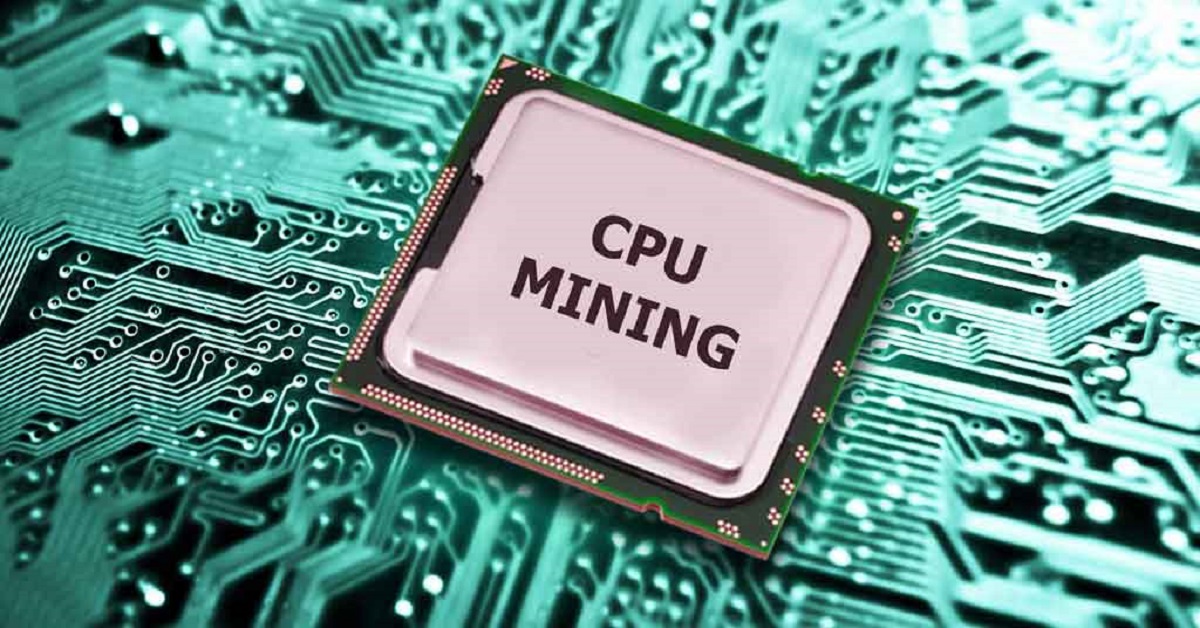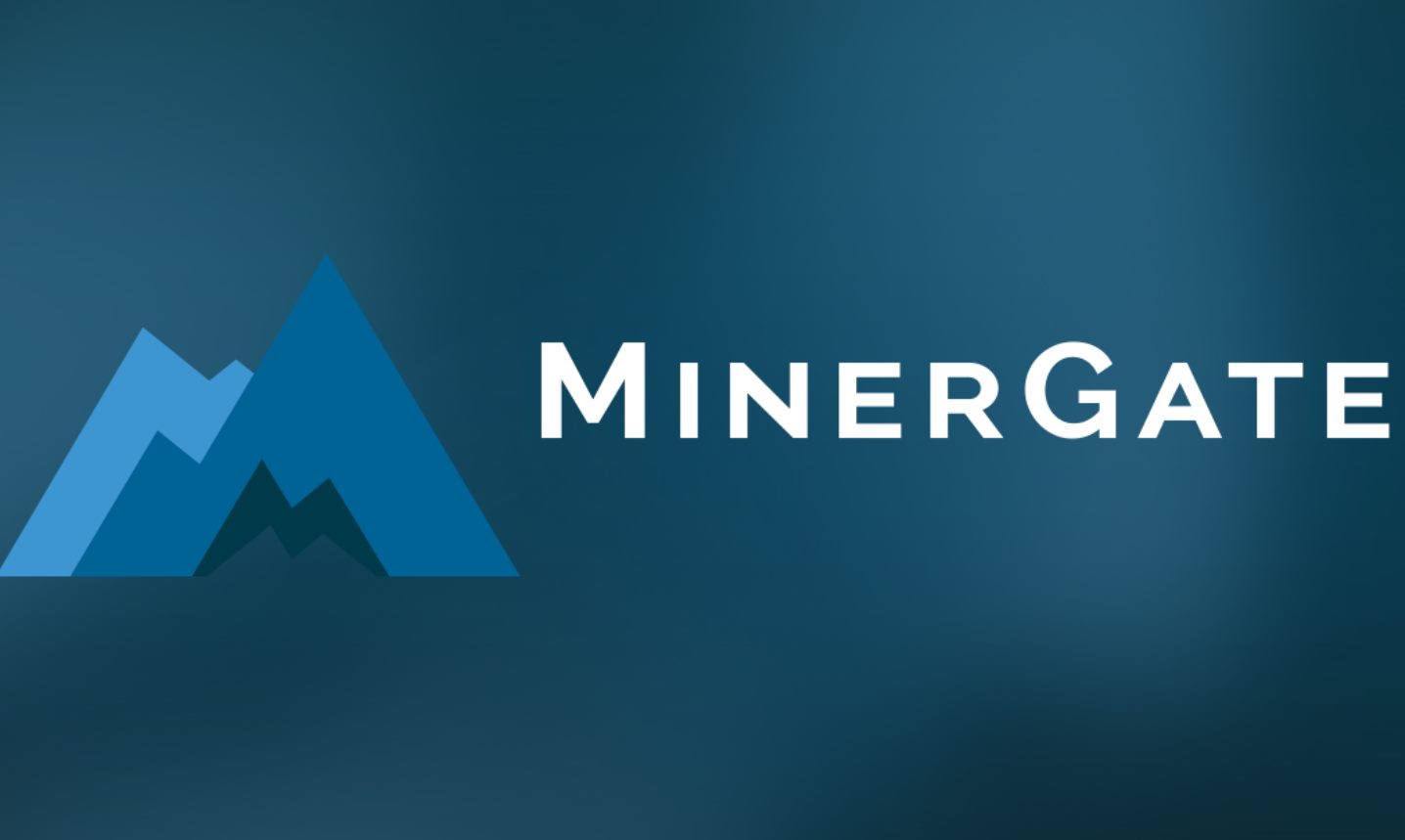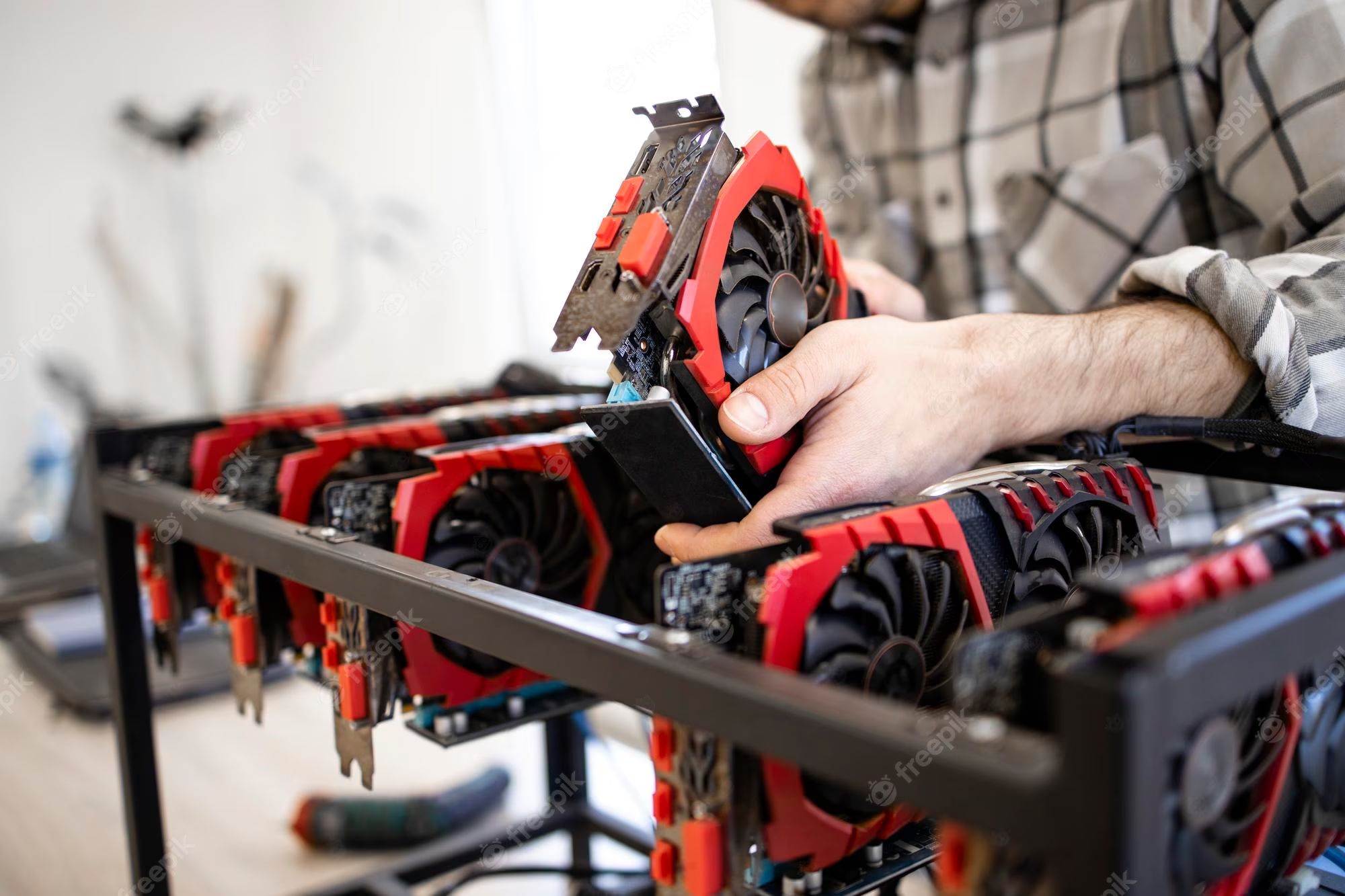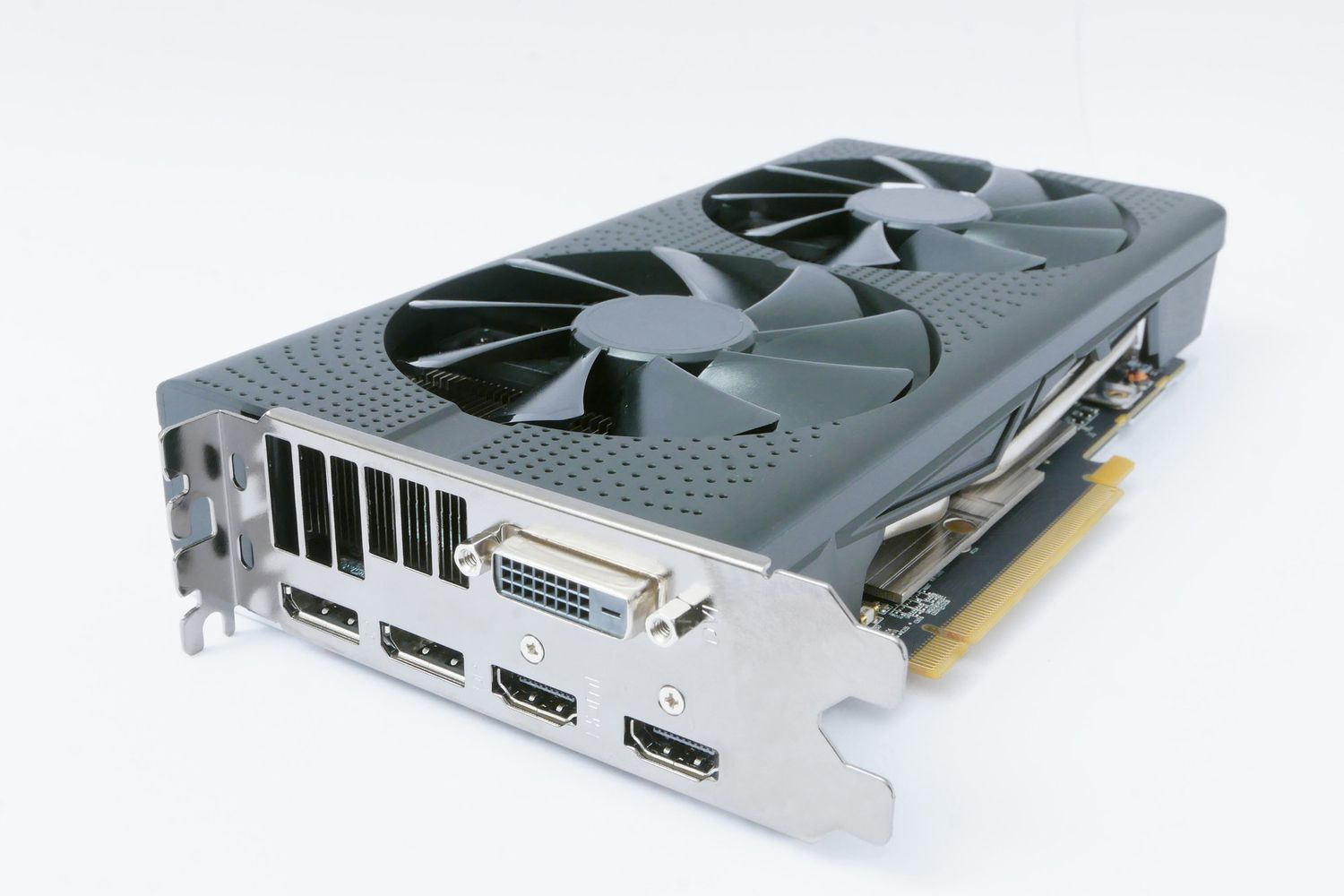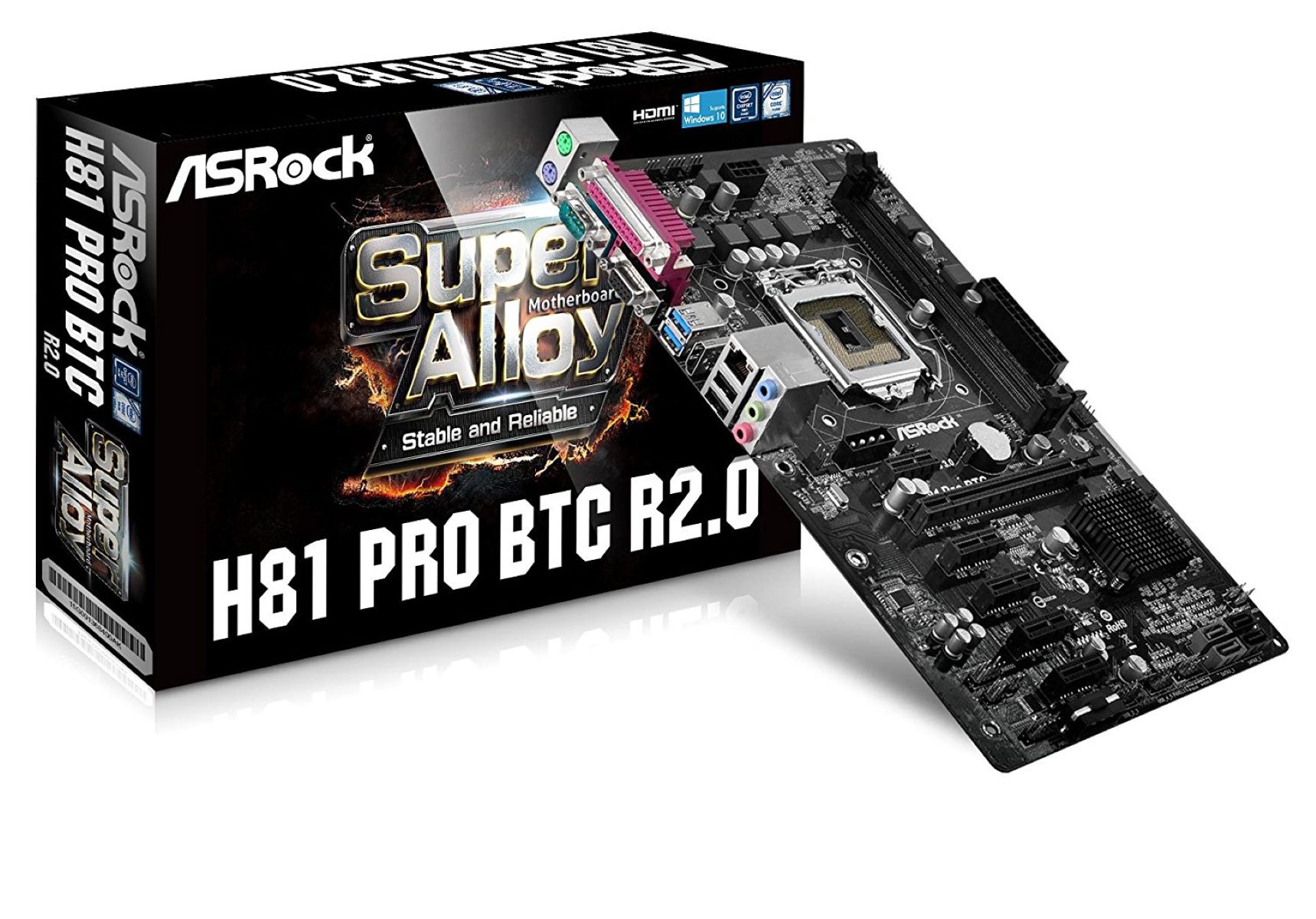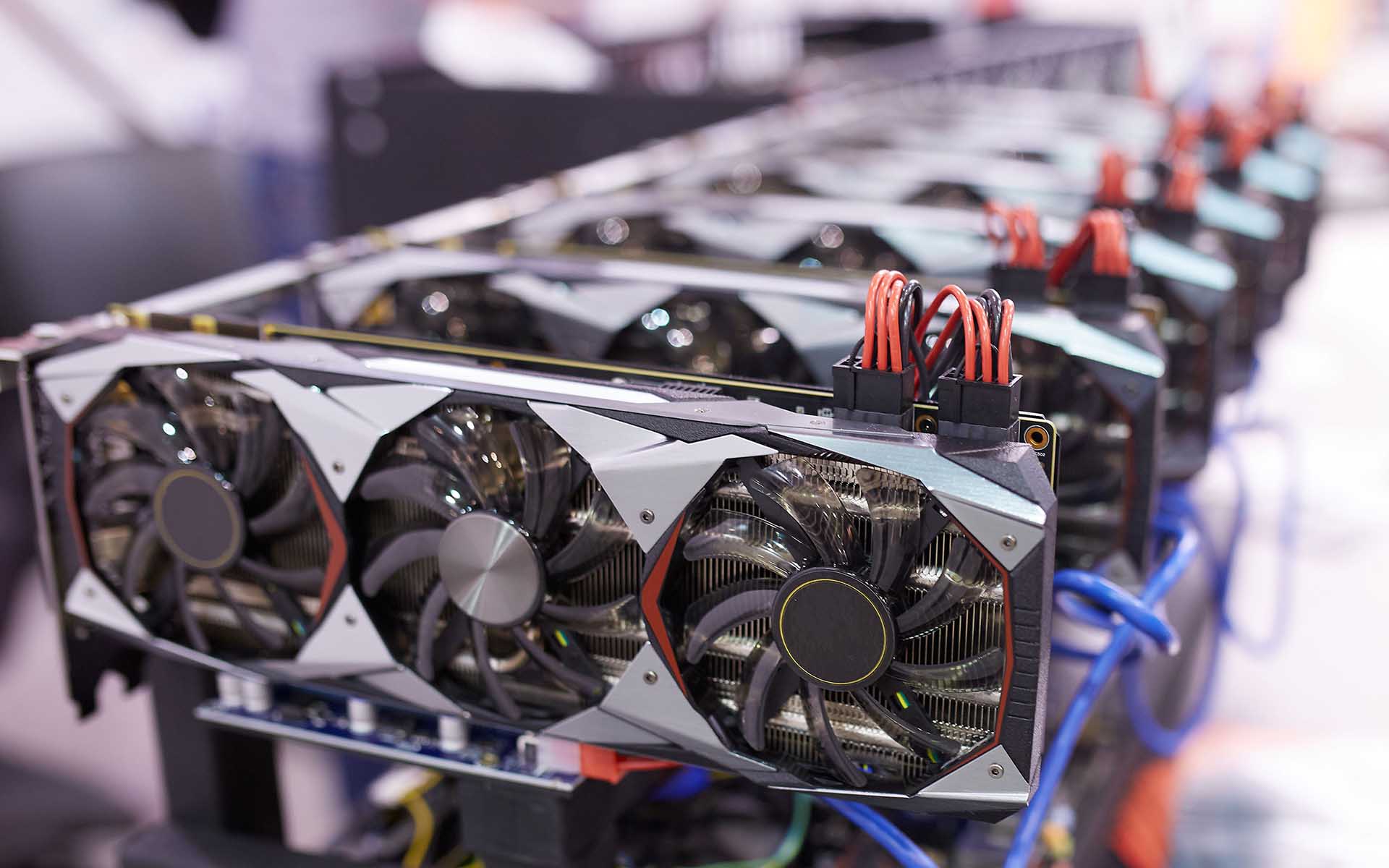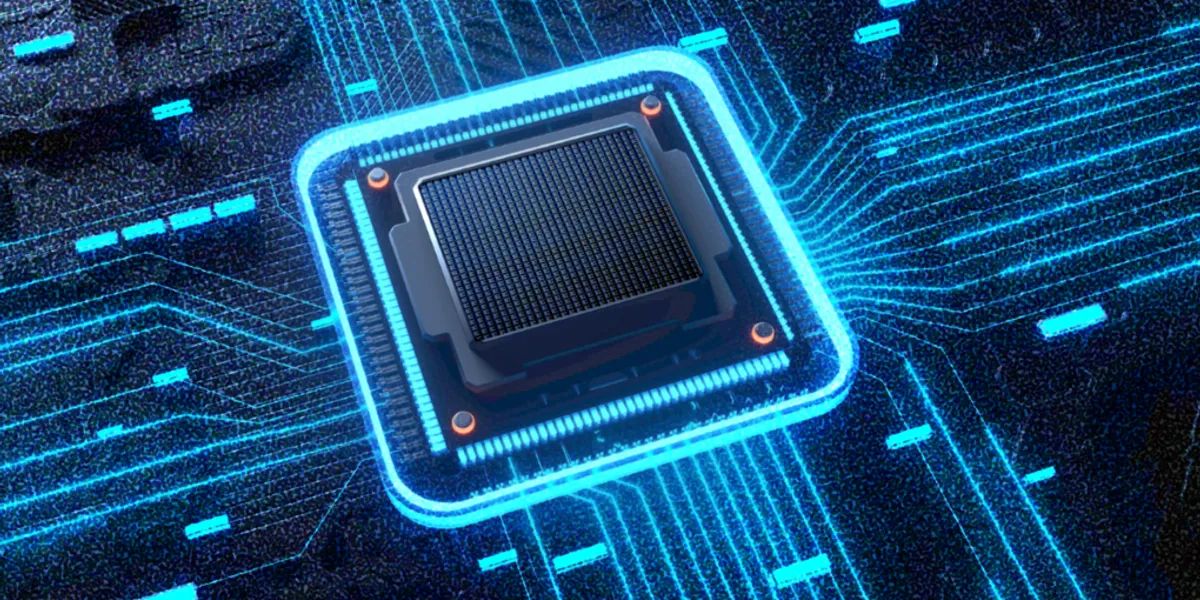Introduction
Welcome to the world of CPU mining! With the rise of cryptocurrencies, mining has become a popular way to earn digital assets. While most people are familiar with GPU or ASIC mining, CPU mining remains a viable option for those looking to get started in the mining world. This article will provide an overview of CPU mining, discuss the factors to consider before diving into CPU mining, highlight the best cryptocurrencies to mine with CPU, explain how to start mining with your CPU, and explore the software and pool options available for effective CPU mining.
CPU mining, as the name suggests, utilizes the Central Processing Unit (CPU) of your computer to solve complex mathematical problems, which in turn validates and secures transactions on a blockchain network. Compared to GPU or ASIC mining, CPU mining is more accessible to beginners, as it doesn’t require specialized hardware and can be done using the regular processor found in most computers.
Before you start mining with your CPU, there are a few factors to consider. Firstly, you need to evaluate the mining profitability, taking into account the cost of electricity and the potential rewards. Additionally, you should assess the heat generated by CPU mining, as it can significantly increase the temperature of your computer. Ensuring proper ventilation and cooling is crucial to prevent overheating and potential hardware damage.
It’s important to note that not all cryptocurrencies are suitable for CPU mining. Some cryptocurrencies, such as Bitcoin, have become highly specialized and are better suited for mining with ASICs. However, there are still several cryptocurrencies that can be effectively mined with CPUs, providing an opportunity for individuals to earn some digital assets.
Getting started with CPU mining is relatively straightforward. You will need to choose a cryptocurrency that is compatible with CPU mining, download the mining software, configure your mining settings, and start mining. The process may vary depending on the chosen cryptocurrency and mining software, but there are ample resources and guides available online to assist you.
Overview of CPU Mining
CPU mining involves using the Central Processing Unit (CPU) of your computer to mine cryptocurrencies. In the initial days of cryptocurrency mining, CPU mining was the primary method used by individuals to earn digital assets. However, with the advent of more advanced mining hardware such as GPUs and ASICs, CPU mining has become less common but still remains relevant for certain cryptocurrencies.
When mining with a CPU, the processor performs complex mathematical calculations to solve cryptographic puzzles. These calculations help validate and secure transactions on the blockchain network. The main advantage of CPU mining is its accessibility. Almost every computer has a CPU, making it easy for anyone to start mining without investing in specialized hardware.
Compared to GPU and ASIC mining, CPU mining is much slower and less efficient. This is because CPUs are designed for general-purpose computing tasks, not specifically for mining operations. GPUS and ASICs, on the other hand, are optimized for parallel processing, making them much more efficient at mining cryptocurrencies.
However, despite its limitations, CPU mining can still be profitable for certain cryptocurrencies, especially those with lower network difficulty. Additionally, CPU mining allows individuals to contribute to the security and decentralization of a blockchain network.
It’s important to note that the profitability of CPU mining depends on various factors such as the mining algorithm, network difficulty, electricity costs, and the value of the mined cryptocurrency. Before diving into CPU mining, it’s crucial to carefully analyze these factors and assess whether it is economically viable for you.
CPU mining is also associated with some challenges. Since CPUs were not designed for mining, they can generate a substantial amount of heat and consume a significant amount of power. This can lead to increased electricity costs and may require additional cooling solutions to prevent overheating. Furthermore, as the network difficulty of popular cryptocurrencies such as Bitcoin and Ethereum increases, CPU mining becomes less profitable as the competition from specialized mining hardware intensifies.
Despite these challenges, CPU mining can still be a viable option, particularly for newer cryptocurrencies with lower network difficulty. It offers a beginner-friendly entry point into the world of mining without the need for costly equipment. With the right approach and careful selection of cryptocurrencies, CPU mining can yield satisfactory results.
Factors to Consider Before Mining with CPU
Before diving into CPU mining, there are several important factors to consider. These factors will help you determine whether CPU mining is a feasible and profitable option for you. Let’s take a closer look at some of the key considerations:
- Mining Profitability: One of the most crucial factors to consider is the profitability of CPU mining. You need to assess the potential rewards of mining compared to the cost of electricity. Keep in mind that CPU mining is generally less profitable than GPU or ASIC mining due to the slower processing power.
- Cryptocurrency Compatibility: Not all cryptocurrencies can be effectively mined with a CPU. Some cryptocurrencies, such as Bitcoin, have become highly specialized and require ASICs for efficient mining. It’s essential to research and identify cryptocurrencies that are compatible with CPU mining and have a reasonable mining difficulty.
- Electricity Costs: CPU mining can consume a significant amount of electricity, especially if you plan to mine for extended periods. It’s vital to consider your electricity costs and calculate whether the potential earnings from CPU mining outweigh the expenses. In regions with high electricity costs, CPU mining may not be economically viable.
- Heat Generation: CPU mining generates a substantial amount of heat, which can significantly increase the temperature of your computer. This can potentially lead to overheating and damage to your hardware. Ensure that your computer has sufficient ventilation and cooling solutions in place to prevent any issues.
- Hardware Limitations: CPUs are not designed specifically for mining operations, and therefore, their mining capabilities are limited. Depending on the CPU model and specifications, the mining performance may vary. It’s essential to assess the capabilities of your CPU and understand the potential hashing power it can provide.
- Network Difficulty: The network difficulty of a cryptocurrency refers to how challenging it is to mine new blocks on the blockchain. As more miners enter the network, the difficulty increases. Popular cryptocurrencies with high network difficulty, such as Ethereum, may not be as profitable for CPU mining due to intense competition from GPU and ASIC miners.
- Security and Decentralization: CPU mining allows individuals to contribute to the security and decentralization of a blockchain network. By participating in CPU mining, you are helping to verify and secure transactions, making the network more resilient. If supporting the decentralization and security of a cryptocurrency is a priority for you, CPU mining can be a rewarding experience.
By carefully considering these factors, you can make an informed decision about whether CPU mining is a suitable option for you. It’s important to constantly monitor the profitability and adjust your mining strategy accordingly based on network difficulty, market conditions, and energy costs. With proper planning and analysis, CPU mining can be a profitable endeavor.
Best Cryptocurrencies to Mine with CPU
While GPU and ASIC mining dominate the cryptocurrency mining industry, there are still several cryptocurrencies that can be effectively mined with a CPU. These cryptocurrencies offer an opportunity for individuals with regular computer setups to participate in mining and potentially earn digital assets. Here are some of the best cryptocurrencies to mine with a CPU:
- Monero (XMR): Monero is a privacy-focused cryptocurrency that uses the CryptoNote algorithm. The algorithm is specifically designed to be resistant to ASIC mining, making it an ideal choice for CPU miners. CPU mining is still relatively effective in mining Monero, providing opportunities for individuals to earn XMR through their CPUs.
- Electroneum (ETN): Electroneum is a mobile-based cryptocurrency that aims to provide financial inclusion to the unbanked population. It utilizes the CryptoNight algorithm, which is CPU-friendly, allowing for efficient mining with CPUs. ETN can be mined using a regular computer setup and is a popular choice for CPU miners.
- Aeon (AEON): Aeon is a lightweight cryptocurrency that is derived from Monero. It utilizes the CryptoNight-Lite algorithm, which is optimized for CPU mining. With Aeon, CPU miners can participate in mining and earn AEON while supporting the network’s security and decentralization.
- Sumokoin (SUMO): Sumokoin is another cryptocurrency that utilizes the CryptoNight algorithm. It aims to provide secure and private transactions. SUMO can be effectively mined with CPUs, making it an attractive option for individuals looking to mine with their regular computer setups.
- Graft (GRFT): Graft is a payment processing platform that utilizes blockchain technology. It can be mined using the CryptoNight algorithm with CPU power. GRFT is designed to be resistant to ASIC mining, offering opportunities for CPU miners to contribute to the network and earn rewards.
It’s important to keep in mind that the profitability of CPU mining depends on various factors, including the network difficulty, the price of the mined cryptocurrency, and the cost of electricity. Additionally, the cryptocurrency market is dynamic, and mining profitability can fluctuate over time. It’s crucial to conduct thorough research and stay updated on the latest trends and developments in the mining industry.
While CPU mining may not be as lucrative as GPU or ASIC mining, these cryptocurrencies provide an avenue for individuals to participate in mining without investing in specialized hardware. CPU mining is also a great way to support the decentralization and security of a blockchain network. So, if you have a regular computer setup and are interested in mining cryptocurrencies, consider exploring these CPU-friendly options.
How to Start Mining with CPU
If you’re ready to start mining cryptocurrencies with your CPU, follow these steps to get started:
- Choose a Suitable Cryptocurrency: Before you begin mining, choose a cryptocurrency that is compatible with CPU mining and aligns with your mining goals. Research different cryptocurrencies and consider factors such as mining difficulty, potential profitability, and long-term viability.
- Set Up a Wallet: To receive and store the mined cryptocurrencies, you’ll need a digital wallet. Choose a trusted wallet that supports the specific cryptocurrency you plan to mine. Ensure that you securely store and backup your wallet’s private keys to prevent any loss of funds.
- Obtain Mining Software: Next, download and install mining software that is compatible with CPU mining. There are various options available, such as XMRig for Monero mining, XMR-Stak for various CryptoNote-based coins, and xmrig-nvidia or xmrig-amd for specific GPU integration.
- Configure Mining Settings: Once you have the mining software installed, you’ll need to configure the mining settings. This involves providing your wallet address and selecting the desired mining pool, if applicable. Additionally, you can specify CPU usage parameters, such as the number of CPU threads to allocate for mining.
- Join a Mining Pool (Optional): While it is possible to mine cryptocurrencies individually, joining a mining pool increases your chances of earning consistent rewards. Mining pools combine the mining power of multiple miners to increase the probability of finding a block. Research and choose a reputable mining pool that is suitable for CPU mining.
- Start Mining: Once you have configured the mining software and, if applicable, joined a mining pool, you can start mining. Launch the mining software and monitor its performance. You’ll be able to observe the hash rate, the number of shares submitted, and other relevant statistics.
- Maintain and Optimize: Regularly monitor your mining setup and ensure that it is running smoothly. Pay attention to the temperature of your CPU to prevent overheating. Optimize your mining settings to achieve the best balance between performance and energy consumption. Keep an eye on any updates or improvements in the mining software or the cryptocurrency network.
Remember that CPU mining may not yield substantial profits compared to GPU or ASIC mining. However, it can still be a rewarding experience, and it provides an opportunity to support the security and decentralization of a blockchain network. Stay informed, adapt to changing market conditions, and regularly evaluate the profitability of your mining activities.
Finally, keep in mind that the cryptocurrency mining landscape is continuously evolving. New cryptocurrencies and mining algorithms emerge, making it important to stay updated and adapt your mining strategy accordingly. With persistence and a well-planned approach, CPU mining can be an enjoyable and potentially profitable venture.
Mining Software for CPU Mining
When it comes to CPU mining, selecting the right mining software is crucial for efficient and effective mining operations. Mining software acts as a bridge between your CPU and the cryptocurrency network, enabling you to connect, mine, and manage your mining activities. Here are some popular mining software options for CPU mining:
- XMRig: XMRig is a widely used mining software for CPU mining, specifically designed for mining Monero (XMR) and other CryptoNote-based cryptocurrencies. It is known for its simplicity and versatility, supporting various CPU architectures and operating systems. XMRig provides users with customization options, including the ability to specify the number of CPU threads and CPU usage.
- CPUMiner-Multi: CPUMiner-Multi is another popular mining software that supports CPU mining for a variety of cryptocurrencies. It is open-source and compatible with multiple mining algorithms, making it a versatile choice for CPU miners. CPUMiner-Multi allows users to mine different cryptocurrencies simultaneously, enhancing mining efficiency.
- XMR-Stak: XMR-Stak is a comprehensive mining software that supports both CPU and GPU mining. It can be used to mine various cryptocurrencies, including those using the CryptoNight algorithm. XMR-Stak offers a user-friendly interface, detailed mining statistics, and advanced configuration options to optimize mining performance.
- CPUminer-Opt: CPUminer-Opt is an optimized version of the original CPUMiner software, specifically developed for CPU mining. It supports multiple mining algorithms and cryptocurrencies, including CryptoNight and others. CPUminer-Opt is known for its performance enhancements and efficient mining capabilities, making it particularly suitable for CPU mining on various platforms.
- CGMiner: Although primarily known for GPU and ASIC mining, CGMiner also supports CPU mining for some cryptocurrencies. It is a robust and feature-rich mining software that offers extensive customization options. CGMiner supports various mining algorithms and provides users with the ability to fine-tune their mining parameters for optimal performance.
These are just a few examples of the mining software available for CPU mining. The choice ultimately depends on the specific cryptocurrency you plan to mine and your personal preferences. Before selecting a mining software, consider factors such as the software’s compatibility with your operating system, its ease of use, its performance optimizations, and its community support.
When downloading mining software, make sure to obtain it from legitimate sources to avoid any potential security risks. Always check for the developer’s official website or reputable open-source platforms to ensure the authenticity and security of the software.
Additionally, stay updated with the latest versions of the mining software to benefit from bug fixes, performance improvements, and new features. Regularly monitoring the performance of your mining software and adapting it to changing market conditions can help maximize your mining efficiency and potential rewards.
Remember that mining software alone is not enough; you also need compatible mining pools and a suitable mining setup to optimize your mining operations. Research, experiment, and stay informed to make the most of your CPU mining endeavors.
Mining Pool Options for CPU Mining
When mining cryptocurrencies with your CPU, joining a mining pool can greatly increase your chances of earning consistent rewards. Mining pools combine the computational power of multiple miners, allowing them to collectively solve mining algorithms and share the rewards. Here are some mining pool options specifically designed for CPU mining:
- MoneroHash: MoneroHash is a popular mining pool specifically dedicated to Monero (XMR) mining. It supports both CPU and GPU mining, making it suitable for miners with different hardware setups. The pool offers a user-friendly interface, low fees, and regular payouts, making it a favorable choice for CPU miners seeking to mine Monero.
- Electroneum Official Pool: For those interested in mining Electroneum (ETN) with their CPUs, the Electroneum Official Pool is an excellent option. It is specifically tailored for CPU miners and supports various mining software configurations. The pool provides a user-friendly interface, low payout thresholds, and regular rewards.
- Aeon Pool: Aeon Pool is dedicated to mining Aeon (AEON), a lightweight privacy-focused cryptocurrency derived from Monero. It supports CPU mining and offers low fees, regular payouts, and a user-friendly interface. AEON CPU miners can join this pool and contribute to the security and decentralization of the Aeon network.
- Sumokoin Pool: Sumokoin Pool is designed for mining Sumokoin (SUMO) using CPU power. It supports various mining software configurations and provides a user-friendly interface, regular payouts, and low fees. CPU miners interested in mining Sumokoin can join this pool and earn rewards for their mining efforts.
- MineGraft: MineGraft is a mining pool dedicated to Graft (GRFT), a cryptocurrency focused on payment processing. It supports both CPU and GPU mining, offering opportunities for miners with different hardware setups. CPU miners can join this pool to participate in mining Graft and contribute to the growth of the network.
These are just a few examples of mining pool options available for CPU miners. When choosing a mining pool, consider factors such as the pool’s reputation, its fee structure, the stability of its servers, and the user experience it provides. Look for pools with a strong community, active support, and regular payouts to ensure a positive mining experience.
Before joining a mining pool, familiarize yourself with the pool’s terms, conditions, and payout policies. Some pools may have specific requirements or restrictions, so it’s important to understand and comply with them to ensure a smooth mining process.
Additionally, remember that mining rewards in a pool are distributed based on the contributed hashing power. Therefore, it’s important to optimize your mining software and hardware to maximize your mining output. Regularly monitor your mining activity, adjust your settings if needed, and stay informed about any pool updates or improvements.
Lastly, keep an eye on emerging mining pools and trends in the industry. New pools may offer unique features, competitive fees, or support for specific cryptocurrencies, making them attractive options for CPU miners.
By selecting a suitable mining pool and optimizing your mining operations, you can enhance your chances of earning consistent rewards while contributing to the security and decentralization of the cryptocurrency networks.
Pros and Cons of CPU Mining
Like any mining method, CPU mining has its own set of advantages and disadvantages. Understanding these pros and cons will help you make an informed decision about whether CPU mining is the right choice for you. Let’s explore the benefits and drawbacks of CPU mining:
Pros:
- Accessibility: CPU mining is accessible to almost everyone with a regular computer setup. As CPUs are standard components in computers, there is no need for specialized and expensive mining hardware like GPUs or ASICs.
- Flexibility: CPU mining allows you to mine a variety of cryptocurrencies. Since different cryptocurrencies use different mining algorithms, CPUs are more versatile than ASICs or GPUs, which are often limited to specific algorithms.
- Beginner-Friendly: CPU mining is a suitable option for beginners who want to dip their toes into mining without complex setups. It requires minimal technical knowledge and can serve as a stepping stone for those interested in learning more about cryptocurrency mining.
- Decentralization: CPU mining contributes to the decentralization and security of a blockchain network. By participating in CPU mining, you help maintain the network’s integrity and resilience, as CPU miners ensure a wider distribution of mining power.
- Potential Profitability: While CPU mining may not be as profitable as GPU or ASIC mining, it can still yield satisfactory results for certain cryptocurrencies. Especially for newer and less popular cryptocurrencies with lower network difficulty, CPU mining can potentially provide profitable mining opportunities.
Cons:
- Lower Hashing Power: CPUs are general-purpose processors not specifically designed for mining operations. As a result, their hashing power is significantly lower compared to GPUs or ASICs. This means that CPU mining is generally slower and less efficient, resulting in lower mining rewards.
- Higher Electricity Consumption: CPU mining consumes a considerable amount of electricity, potentially resulting in higher electricity costs. The relatively low efficiency of CPU mining, coupled with the intense computational work involved, can significantly impact your energy consumption and associated expenses.
- Reduced Profitability Compared to GPUs or ASICs: The slower hashing power of CPUs combined with higher electricity costs means that CPU mining is generally less profitable than GPU or ASIC mining. As network difficulties increase and more miners adopt specialized mining hardware, the profitability of CPU mining further diminishes.
- Increased Heat Generation: CPU mining generates a significant amount of heat, which can lead to increased temperatures within your computer system. This can potentially result in higher cooling requirements and the need for adequate ventilation to prevent overheating and potential hardware damage.
- Limited Cryptocurrency Compatibility: Not all cryptocurrencies are suitable for CPU mining. Many popular cryptocurrencies, such as Bitcoin and Ethereum, have become highly specialized and are better mined using GPUs or ASICs. CPU mining is generally more suited for cryptocurrencies with lower network difficulty and resistant to ASIC mining.
It’s important to carefully weigh these pros and cons before embarking on CPU mining. Consider your hardware capabilities, electricity costs, and the specific cryptocurrency you plan to mine. If accessibility, flexibility, and decentralization are key priorities for you, CPU mining can still be a rewarding and profitable endeavor.
Tips for Maximizing CPU Mining Efficiency
While CPU mining may not offer the same level of efficiency as GPU or ASIC mining, there are several tips and strategies you can employ to maximize your mining efficiency. These tips will help you optimize your CPU mining operations and potentially increase your mining rewards. Here are some suggestions:
- Choose the Right Cryptocurrency: Selecting the right cryptocurrency to mine is crucial for CPU miners. Look for cryptocurrencies that are specifically designed for CPU mining and have a lower network difficulty. This will maximize your chances of earning rewards for your mining efforts.
- Optimize Mining Software: Ensure that you have the latest version of the mining software installed. Developers often release updates that improve mining performance and fix bugs. Optimize your mining software settings, such as the number of CPU threads and CPU usage, to strike the right balance between performance and energy consumption.
- Monitor Temperature and Use Proper Cooling: CPU mining can significantly increase the temperature of your computer system. To prevent overheating, ensure proper ventilation and use adequate cooling mechanisms such as fans or liquid cooling systems. Monitoring and controlling the temperature will help maintain the stability and longevity of your hardware.
- Utilize Energy-Saving Features: To reduce electricity consumption, consider enabling energy-saving features on your CPU. Many CPUs have power-saving settings that can help lower energy usage without sacrificing mining performance. However, be mindful that lowering CPU power too much may result in decreased hashing power.
- Monitor Network Difficulty and Market Conditions: Stay updated on network difficulty and market trends for the cryptocurrencies you are mining. Network difficulty directly affects mining profitability, so adjust your efforts accordingly. If the network becomes more competitive, you may need to reconsider your mining strategy or switch to another cryptocurrency.
- Consider Mining During Off-Peak Hours: Electricity costs can vary depending on the time of day. Consider mining during off-peak hours when electricity rates are generally lower. This can help reduce your overall mining expenses and improve your profitability.
- Join CPU-Friendly Mining Pools: Joining a mining pool specifically designed for CPU miners can increase your chances of earning consistent rewards. Look for mining pools that offer low fees, regular payouts, and support CPU mining. Collaborating with other miners in a pool provides you with a higher chance of successfully mining blocks.
- Continuously Learn and Adapt: Stay informed about advancements in CPU mining and mining software. Join mining communities, follow relevant forums, and participate in discussions to gather insights and stay updated. Sharing knowledge and experiences with other miners can help you improve your mining efficiency.
Remember that CPU mining may not yield substantial profits like GPU or ASIC mining. However, with careful optimization and adherence to these tips, you can maximize your CPU mining efficiency and potentially increase your mining rewards. Keep an eye on market conditions, review your mining setup regularly, and be prepared to adapt your strategy to changing circumstances.
Lastly, enjoy the process of mining and appreciate the role you play in supporting the security and decentralization of the cryptocurrency networks through CPU mining.
Conclusion
CPU mining offers an accessible entry point into the world of cryptocurrency mining. While it may not be as efficient or profitable as GPU or ASIC mining, CPU mining provides an opportunity for individuals with regular computer setups to participate in mining and potentially earn digital assets. By using the processor of your computer, CPU mining allows you to contribute to the security and decentralization of blockchain networks.
Before diving into CPU mining, it is crucial to consider various factors such as mining profitability, cryptocurrency compatibility, electricity costs, and hardware limitations. By carefully evaluating these aspects, you can determine if CPU mining is a viable option for you and select the most suitable cryptocurrencies to mine.
To maximize CPU mining efficiency, follow tips such as optimizing mining software, monitoring temperatures, utilizing energy-saving features, and joining CPU-friendly mining pools. Regularly monitoring network difficulty and adapting your mining strategy will help you stay competitive and potentially increase your mining rewards.
While CPU mining may have its limitations, it still holds value in its accessibility, versatility, and potential profitability for specific cryptocurrencies. It provides a pathway for beginners to enter the mining world and offers an opportunity to support the security and decentralization of blockchain networks.
Remember to stay informed, keep up with technological advancements, and adapt as the cryptocurrency mining landscape evolves. By continuously learning and optimizing your mining operations, you can make the most of your CPU mining experience.
Whether you’re a hobbyist or a mining enthusiast, CPU mining can be an engaging and rewarding pursuit. So, get ready to unleash the power of your CPU and embark on your mining journey!







